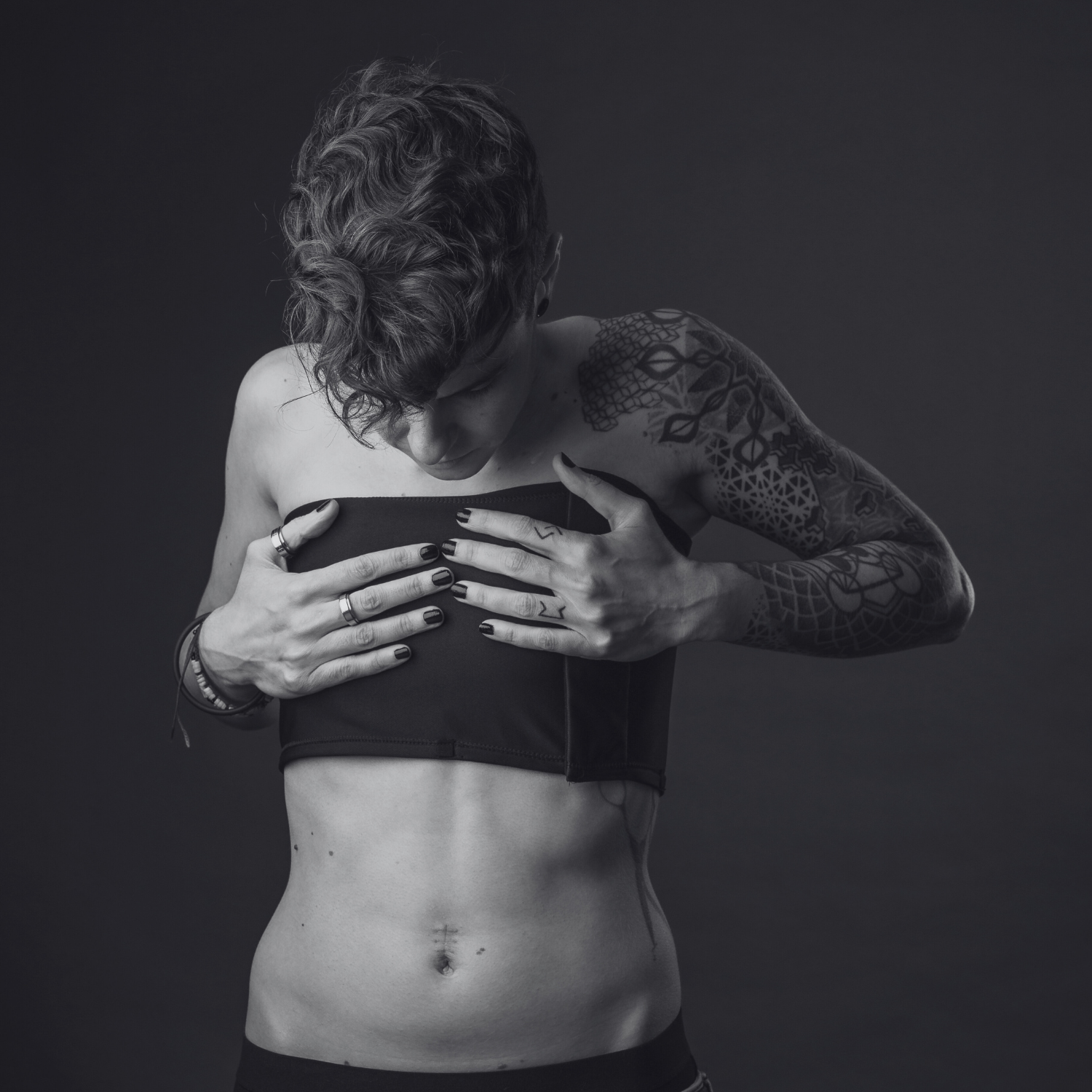Chest Binding: What It Is and How to Do It Safely
What is chest binding?
Chest binding (or just “binding”) describes the process of tightly wrapping a chest or using compressor fabrics in order to flatten and minimize the appearance of breasts.
Binding is a common practice among trans folks, and is a method of coping with gender related body dysphoria, as well as helping folks to achieve the outward gender presentation that best reflects their internal self.
Binding is a form of gender affirmation; while trans, queer, and gender non-conforming people may feel uncomfortable, uneasy or dysphoric at the sight of their own breasts, binding helps to match one's internal with their external self. It helps folks feel intentionally aligned with their gender and confident, secure and at home in their body and presentation.
There are a few different forms of chest binding including:
Shirt layering: a budget option for those who don’t have a proper binder. It’s not the most effective, but it can have a flattening effect, particularly when paired with a sports bra.
Compressive wear: some athletic wear (sports bras, shirts) come in a compressive fabric, which can function effectively as a chest binder.
Queer made binders: there are many queer owned companies that sell binders specifically for gender affirming chest compression. They look like a combination of an undershirt and a sports bra.
How can you bind safely?
Without proper care and safety, however, binding can be dangerous. Without access to resources or information, some queer folks turn to unsuitable and potentially harmful materials in order to mimic the compressive look of a binder. These materials can be things like ace bandages, or even heavy duty tape, both of which can cause long term damage when used as a binder.
The proper fit of a binder is also crucial–binding too tightly, or for too long can lead to back or chest injuries, rib bruising or breaking, overheating, skin damage and shortness of breath. While some people are tempted to buy one size smaller than recommended for a very compressed look, that is very dangerous and may cause permanent damage to your ribs or lungs. Make sure to use a sizing guide when purchasing your binder, and when trying it on, make sure you can still comfortably get two fingers between the fabric and your body.
Signs of an improperly fitting binder include:
Labored breathing
Difficulty with small movements
Back bain
Overheating
Dehydration
Skin rashes
Discomfort when sitting
It’s important not to bind all of the time. Based on a 2016 study, capping use at 8 hours a day 6 days a week (taking one day off completely) is the most one should bind their chest–making sure to remove the binder before sleep.
While it is a method of gender affirmation, and it can be emotionally discomforting to not have a binder on, when you’re relaxing at home or alone it’s important to have time without your binder on. It can be helpful to set aside some specific shirts that don’t emphasize your chest to wear when going without your binder, to reduce any emotional turmoil that that may cause.
Be sure to take your binder off immediately if you start to feel any of the symptoms listed above, or if you have any pain or trouble breathing. Be sure to listen to what your body is telling you–any pain or discomfort is a message you need to pay attention to, even if it means ditching the binder for now.
BLOG AUTHORS ALL HOLD POSITIONS AT THE GENDER & SEXUALITY THERAPY CENTER (G&STC). FOR MORE INFORMATION ABOUT OUR THERAPISTS AND SERVICES PLEASE CONTACT US.
